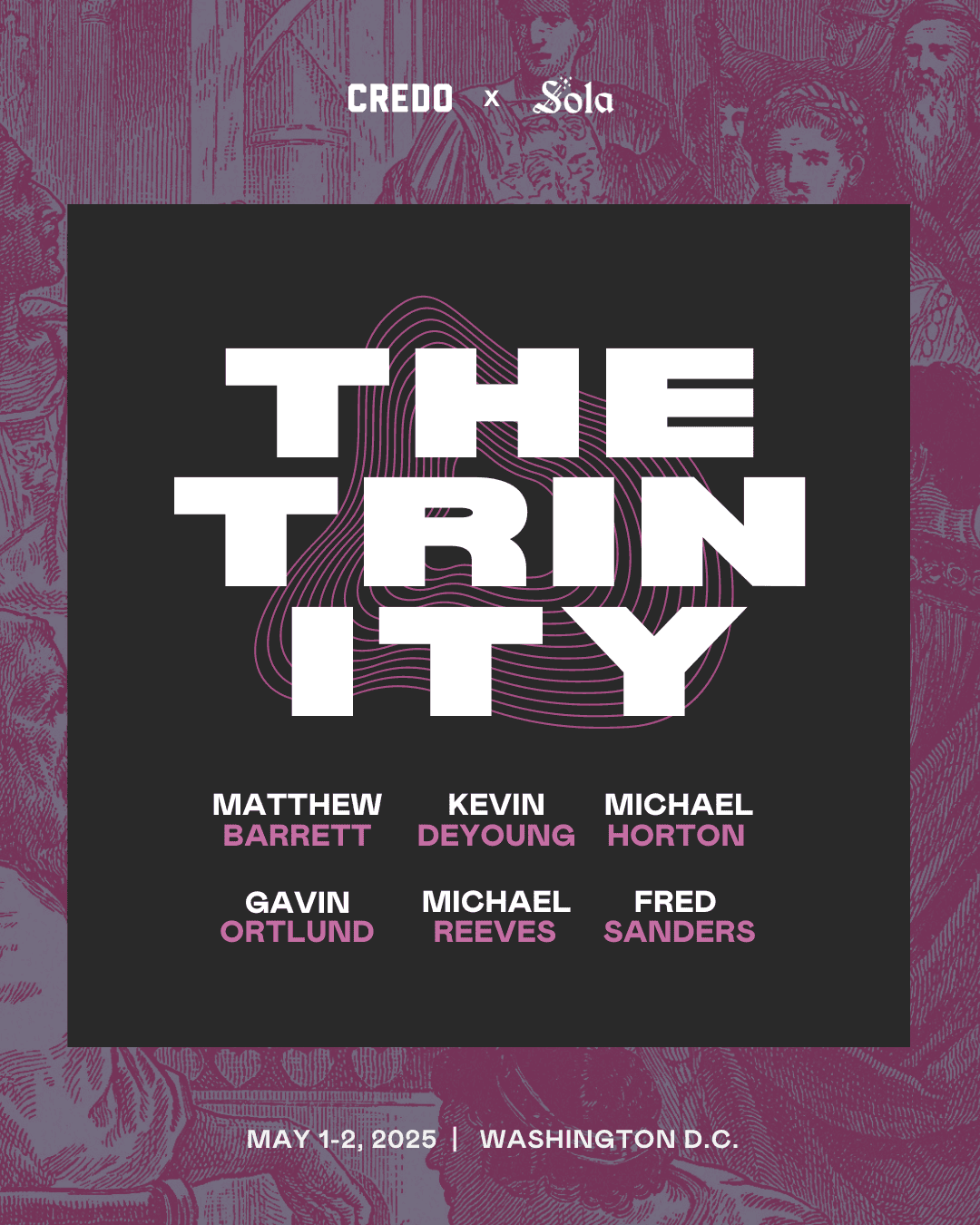
The Nature of Biblical “Types”
We saw last time that “typology” is that study of Scripture which understands certain Old Testament events, persons, and institutions as historical and yet symbolic anticipations — or previews, prefigurements — of realities later realized in the New Testament. In that post I sought to establish the Biblical warrant for this “typological” approach to Scripture simply by surveying the New Testament writers’ (and Jesus’) understanding of certain Old Testament persons, events, and institutions as pointing forward or prefiguring a work God will fully accomplish in the person and work of our Lord Jesus Christ.
In this post I will attempt, as briefly as possible, to identify more closely the nature of a Biblical “type.” We have all seen the abuse of typology in symbolism that seems to find its grounding only in the fertile imagination of the preacher. Our question here concerns a legitimate and responsible — that is, a genuinely biblical — typology.
Some have retreated to the “safe” assumption that the only genuine “types” are those explicitly identified for us as such in the New Testament. This assumption may feel safe, but the approach of the New Testament writers, which they of course learned from Jesus, seems to indicate a pattern of thinking that we are to learn. In fact, David Baker and others have pressed this point exactly — that “typology is not so much a prescribed method of interpretation which functions according to fixed rules, so much as it is a way of thinking” (my emphasis). That is, New Testament typology rests on a recognition of the larger biblical story and its redemptive design, of “salvation history” as we call it, and of larger biblical and historical patterns in God’s unfolding purpose that culminates in Christ. This understanding is essential to responsible typology.
But can we be more specific? In his new Handbook on the New Testament Use of the Old Testament Greg Beale offers a definition that is fairly representative of the wider consensus of Christian scholarship:
“the study of analogical correspondences among revealed truths about persons, events, institutions and other things within the historical framework of God’s special revelation, which, from a retrospective view, are of a prophetic nature and are escalated in their meaning.”
In a responsible typology, then, there is 1) analogical correspondence — some obvious point of connection or commonality of purpose; 2) historicity — not allegory or midrash or pure imagination; 3) anticipation — a genuine foreshadowing and expectation, a “pointing forwardness” that is evident in the type itself; 4) retrospection — a looking back and fuller observation that “this is that”; and 5) escalation — a heightening in which the antitype is seen as “greater and better” than the type.
The difficulty involved in the typology stems from the more “surprising” ways in which the New Testament writers sometimes understand the Old Testament. For example, how did Matthew see that Hosea 11:1 — “Out of Egypt I have called my son” — was anticipatory of and “fulfilled” in the infant Jesus’ ascent from Egypt with Joseph and Mary (Matt. 2:15)? And how did he know that Rachel’s tears (Jer. 31:15) were “fulfilled” in the slaughter of the innocents in Bethlehem (Matt. 2:17-18)?
Before we are too hard on Matthew and judge him irresponsible, there are some considerations we should bear in mind. First, we must recognize that the apostles were convinced that they were handling Scripture as it ought to be handled. In fact, they insisted that their use of the Old Testament should prove convincing and conclusive, as in their apologetic to the Jews. Moreover, we should assume that the apostles were in fact handling Scripture responsibly. Surely our doctrine of inspiration requires this, and surely a large part of the apostles’ role as our teachers is to show us how to understand the Old Testament. And yet (and here’s the rub) at least sometimes the New Testament writers seem to see more in a given Old Testament passage than the Old Testament writer himself. Certainly, before we give the apostles a “D” in hermeneutics we should first seek to learn from them. How did they see Old Testament passages as prospective? What consideration(s) warranted the “fuller” meaning they give us?
Admittedly, when necessary, I am willing simply to appeal to the apostles’ inspiration and let that be that. There may be on occasion a “fuller sense” given the New Testament author by the divine Author of both Testaments. But I think these instances are few (see Doug Moo, “The Problem of Sensus Plenior”), and it should not be our first recourse. When at all possible we should learn the apostolic hermeneutic itself.
A large part of the answer is found in a mix of the following considerations. First, the apostles understood the Old Testament as an incomplete book that reaches its climax — “fulfillment” — only in Jesus. In this sense the Old Testament as a whole was anticipatory and prospective. More importantly, they understood this sense of expectation as shaped by over-arching divine promises — such as Genesis 3:15, Genesis 12 and 15, and 2 Samuel 7 — that dominated the whole religious outlook of Judaism and the Old Testament. Further, as we saw last time, they observed in the Old Testament itself certain repeated patterns that “predict” or prefigure how God will act in the future. And seeing this great forward-movement and all these trajectories that inevitably culminate in Christ (cf. 2 Cor. 1:20), the apostles had learned — from Jesus himself! — to think Christologically. They were so deeply convinced that the Old Testament was about Jesus — both on its own terms and on the testimony of Jesus himself (John 5:46; Luke 24:27, 44, etc.) — that they could not fail to see him throughout the text. The apostles understood the Old Testament as an incomplete book that reaches its climax — “fulfillment” — only in Jesus. Share on X
And yet it was not simply zealous imaginations at work. Typology may be “a way of thinking,” but it is more than that. It is a principled way of thinking. It is looking back (retrospective), but it is also looking back and noticing that Jesus brings about what was actually anticipated in the Old Testament (prospective).
So for example, Hosea proclaims Israel’s future restoration. Israel’s sin and rebellion will not be their final end. There will be exile again, but there will be restoration also. And all this is described in terms of Egypt, wilderness, and exodus. There will be a new Egypt and a new wilderness experience for rebellion, and yet a new exodus also. Add to this the fact that Israel is God’s “son” — yet another Christological theme — and it isn’t long before you have to connect all the dots and see a pattern that drives you to Jesus. Within all this, Matthew’s take (2:15) on Hosea 11:1 does not seem such a long reach after all. Matthew is “looking back” with Jesus-shaped lenses, to be sure. But there is in Hosea a “looking ahead” also.
As another example, we know that Deuteronomy 18:15ff speaks directly of Jesus as a “new Moses.” So also Joshua is treated as a new Moses. It would seem but a small step, then, to see Joshua also as a “type” of Jesus (cf. Matt. 1:21). He also is part of that pattern that culminates in Christ.
The text of Genesis 9 famously presents Noah as a kind of new Adam, the emerging new world as a new Eden, and so on. And the commands to Adam (Gen. 1:28) are echoed in the narratives about Noah, Abraham, Isaac, and Jacob. But of course like Adam all failed. Yet the echoes of Genesis 1:28 continue to be heard throughout the Old Testament, and at some point in it all we have to think that this pattern is anticipatory and prospective of a New Adam who will not fail.
So also, when learning the details of the Old Testament Tabernacle and Temple, at some point we begin to notice similarities with Eden, and then again in the Prophets of a new Temple to come. The pattern seems unmistakable, and it establishes an expectation that can be realized only in Jesus. There is a retrospective aspect, of course, but a prospective one also.
Or, looking back from our standpoint, in Hebrews 9-10 the author reflects on the Old Testament believer observing the sacrifices year after year. At some point the thinking person has to ask, “Of what value are these sacrifices if they have to be repeated?” That is to say, there is something in the sacrificial system itself that is prospective, pointing away from itself to something greater but not yet realized.
This could go on, but my point here is simply that when the apostles “saw” Jesus in the Old Testament, it was not merely an overly zealous imagination at work but a deep conviction that Old Testament history intentionally culminates in Jesus and that this sense of anticipation is built in to its structure and narrative.
And all this helps us to identify the nature of responsible typology. It is a way of thinking, but it is not purely imaginative. It is a thinking guided by the structures and patterns of thought that have for centuries been building and “filling up” (Mk. 1:15) until the fulness (Gal. 4:4) is reached in the Lord Jesus Christ (cf. Col. 2:16-17).
Charles Fritsch summarizes it well:
“Thus typology is not a matter of collecting all of the resemblances between the Old and New Testaments, but rather of understanding the underlying redemptive and revelational process which begins in the Old Testament and finds its fulfillment in the New.”
Don Carson writes similarly:
The NT writers insist that the OT can be rightly interpreted only if the entire revelation is kept in perspective as it is historically unfolded (e.g., Gal. 3:6-14). Hermeneutically this is not an innovation. OT writers drew lessons out of earlier salvation history, lessons difficult to [completely] perceive while that history was being lived, but lessons that retrospect would clarify (e.g., Asaph in Ps. 78; cf. on Matt 13:35). Matthew does the same in the context of the fulfillment of OT hopes in Jesus Christ. We may therefore legitimately speak of a “fuller meaning” than any one text provides. But the appeal should be made, not to some hidden divine knowledge, but to the pattern of revelation up to that time – a pattern not yet adequately discerned. The new revelation may therefore be truly new, yet at the same time capable of being checked against the old.
Typology, then, is something of an art as well as a science. It is “a way of thinking.” But it is not without exegetical or hermeneutical control, as the “prospective” element ensures.

